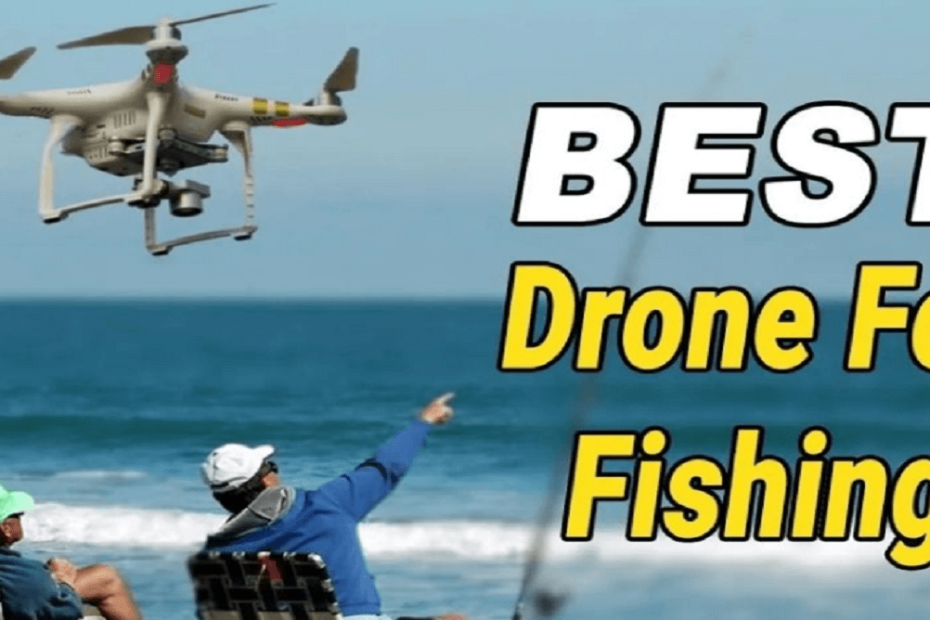Drone fishing has gained immense popularity among fishing enthusiasts in recent years. It combines the thrill of angling with the excitement of drone technology. With a drone fishing rig, you can cast your line further into the water, reach remote fishing spots, and increase your chances of catching that prized fish.
In this article, we will guide you through the process of making a drone fishing rig, step by step.
If you want to buy the Best Fishing Drones in the world then read this guide.
Visit Site: Camera Creative is a company that provides information about cameras. They provide reviews, tutorials, and other helpful information.
How to Make a Drone Fishing Rig: Step By Step Guide
1. Understanding the Basics of a Drone Fishing Rig
Before you begin building your drone fishing rig, it’s essential to understand the basic components involved. A drone fishing rig typically consists of a drone, a release mechanism, and fishing gear. The release mechanism is designed to drop the bait and line into the water while the drone hovers above.
2. Selecting the Right Drone
To create an effective drone fishing rig, you need a suitable drone that can carry the weight of the fishing gear and handle windy conditions. Look for a drone with a strong payload capacity, long battery life, and stable flight capabilities. Popular choices for drone fishing include the DJI Phantom and the DJI Mavic series.
3. Choosing the Fishing Gear
Selecting the appropriate fishing gear is crucial for a successful drone fishing experience. Opt for sturdy fishing rods and reels capable of handling the weight of the bait and potential catch. Braided fishing lines are recommended as they offer strength and durability.
4. Building the Release Mechanism
The release mechanism is an integral part of the drone fishing rig. It allows you to release the bait and line precisely at your desired fishing location. You can either purchase a pre-made release mechanism or build one yourself using a servo motor, a release clip, and a 3D-printed or custom-made mounting bracket.
5. Mounting the Release Mechanism on the Drone
Once you have your release mechanism ready, it’s time to mount it onto the drone. Follow the manufacturer’s instructions or consult online resources for specific guidance on attaching the release mechanism securely to your drone model. Ensure that the release mechanism is balanced and doesn’t interfere with the drone’s stability.
6. Testing and Safety Considerations
Before taking your drone fishing rig out for a real fishing adventure, it’s important to conduct thorough testing and consider safety precautions. Test the release mechanism multiple times to ensure it operates smoothly and reliably. Familiarize yourself with the drone’s flight controls and practice flying in open areas away from people and obstacles.
7. Tips and Best Practices for Drone Fishing
To enhance your drone fishing experience, here are some valuable tips and best practices to keep in mind:
- Check local regulations and obtain necessary permits before drone fishing.
- Choose calm weather conditions to ensure a stable flight and optimal fishing results.
- Practice proper casting techniques to maximize the distance and accuracy of your bait.
- Maintain a safe distance from other anglers, wildlife, and restricted areas.
- Always keep an eye on the battery level and return to land before it runs low.
- Be mindful of the environment and dispose of any fishing waste responsibly.
8. Legal and Ethical Considerations
Drone fishing falls under the jurisdiction of aviation and fishing regulations. It’s important to familiarize yourself with the rules and regulations specific to your location. Obtain any required permits or licenses, adhere to no-fly zones, and respect the privacy and safety of others while drone fishing.
9. Maintenance and Care
Regular maintenance and care are essential to keep your drone fishing rig in optimal condition. Clean the drone and fishing gear after each use to remove any saltwater or debris. Inspect the release mechanism for any signs of wear or damage and replace components as needed. Follow the manufacturer’s instructions for battery care and storage.
Conclusion
, you can build a reliable and efficient rig that enhances your fishing experience. Remember to prioritize safety, adhere to regulations, and respect the environment while enjoying this innovative approach to angling.
FAQs
1. Is drone fishing legal?
Drone fishing is subject to regulations that vary by country and region. It’s important to research and comply with the local laws governing drone and fishing activities.
2. Can any drone be used for drone fishing?
Not all drones are suitable for drone fishing. Look for drones with sufficient payload capacity and stability to handle the weight of the fishing gear and operate in windy conditions.
3. What type of fishing line should I use?
Braided fishing lines are commonly used in drone fishing due to their strength and durability. They provide better control and minimize the risk of line breakage.
4. How far can a drone cast the line?
The casting distance of a drone depends on various factors such as drone model, wind conditions, and fishing gear. Some drones can cast the line several hundred meters away from the shore.
5. Are there any risks involved in drone fishing?
Drone fishing carries certain risks, including the potential loss of the drone, entanglement with power lines or obstacles, and interference with wildlife. It’s crucial to exercise caution and follow safety guidelines.
